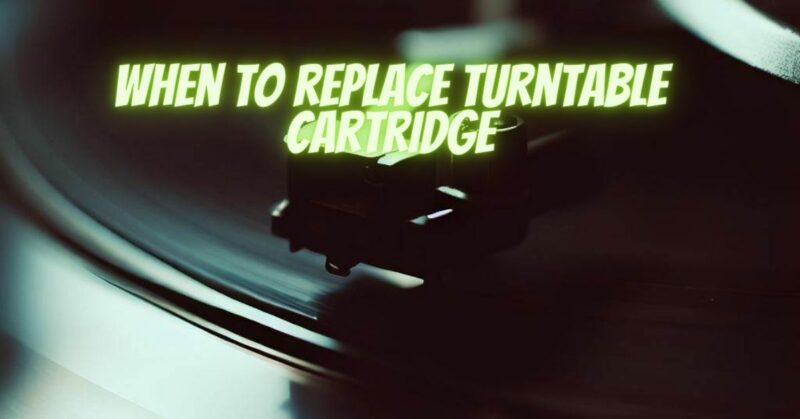As the heart of the vinyl playback system, the turntable cartridge plays a pivotal role in translating the magic of vinyl records into mesmerizing audio. Over time, a cartridge may experience wear and tear, impacting the quality of sound reproduction. In this informative article, we explore the signs and considerations that indicate it’s time to replace your turntable cartridge, ensuring a renewed and captivating vinyl listening experience.
Signs of Cartridge Wear:
- Deteriorating Sound Quality: One of the most apparent signs of a worn cartridge is a noticeable decline in sound quality. You may observe a loss of high-frequency detail, reduced clarity, and increased distortion, affecting the overall listening experience.
- Increased Surface Noise: A worn stylus can produce excessive surface noise, such as clicks, pops, and background hiss, making it difficult to fully immerse yourself in the music.
- Tracking Issues: If your cartridge struggles to track the grooves accurately, causing skipping or jumping, it’s a clear indication of potential cartridge wear.
- Premature Record Wear: An aging cartridge may exert excessive force on vinyl records, leading to premature wear and damage to your precious vinyl collection.
Cartridge Lifespan:
The lifespan of a turntable cartridge depends on several factors, including the quality of the cartridge, usage patterns, tracking force, and maintenance. On average, a well-maintained cartridge can last thousands of hours of playback before showing signs of significant wear.
Stylus Replacement vs. Cartridge Replacement:
When considering cartridge replacement, it’s essential to understand that the stylus (needle) and the cartridge are separate components. In many cases, the stylus alone can be replaced without replacing the entire cartridge assembly. Stylus replacement is a cost-effective way to improve performance and extend the cartridge’s life.
However, if the cartridge itself is damaged or near the end of its usable life, replacing the entire cartridge may be necessary. Cartridge replacement allows for greater customization and can offer enhancements in sound quality and overall performance.
Considerations for Replacement:
- Listening Evaluation: Perform critical listening sessions to assess the current state of your cartridge’s performance. Pay attention to changes in sound quality, detail, and overall fidelity.
- Stylus Inspection: Examine the stylus closely under a magnifying glass or stylus microscope. Look for signs of wear, such as a worn or chipped diamond tip.
- Maintenance and Care: Consider your cartridge’s maintenance history. Regular cleaning and proper tracking force adjustment can significantly extend its lifespan.
- Budget and Upgrading: Determine your budget and whether you wish to explore potential cartridge upgrades for improved sound quality.
Seeking Expert Advice:
If you’re unsure about the condition of your cartridge or need guidance on replacement options, consider seeking advice from experienced audio specialists or turntable manufacturers. They can help identify the best solution based on your specific turntable setup and preferences.
In conclusion, knowing when to replace your turntable cartridge is essential for maintaining an exceptional vinyl listening experience. Signs of deteriorating sound quality, increased surface noise, tracking issues, and premature record wear are indicators that a replacement may be necessary. Consider the cartridge’s lifespan, stylus replacement vs. cartridge replacement options, and your budget when making the decision. By carefully evaluating your cartridge’s condition and seeking expert advice, you can ensure a renewed and captivating vinyl journey, where the melodies of analog music resonate with timeless enchantment. Happy spinning!


